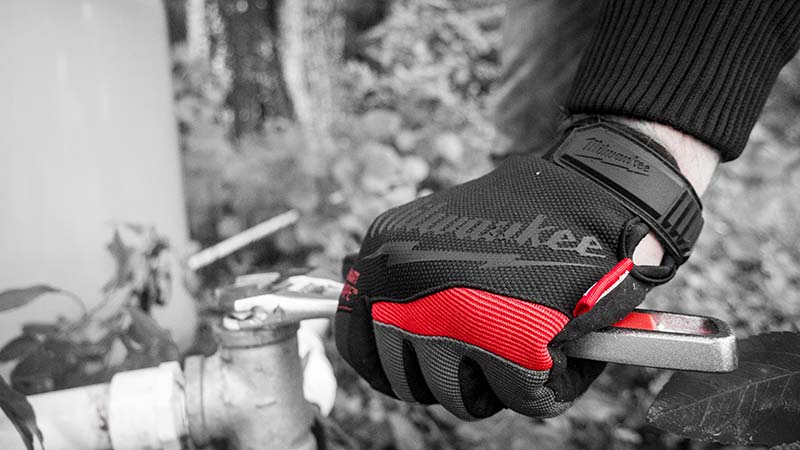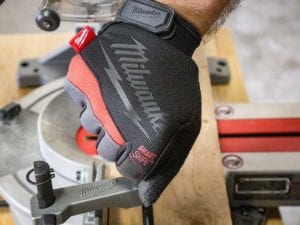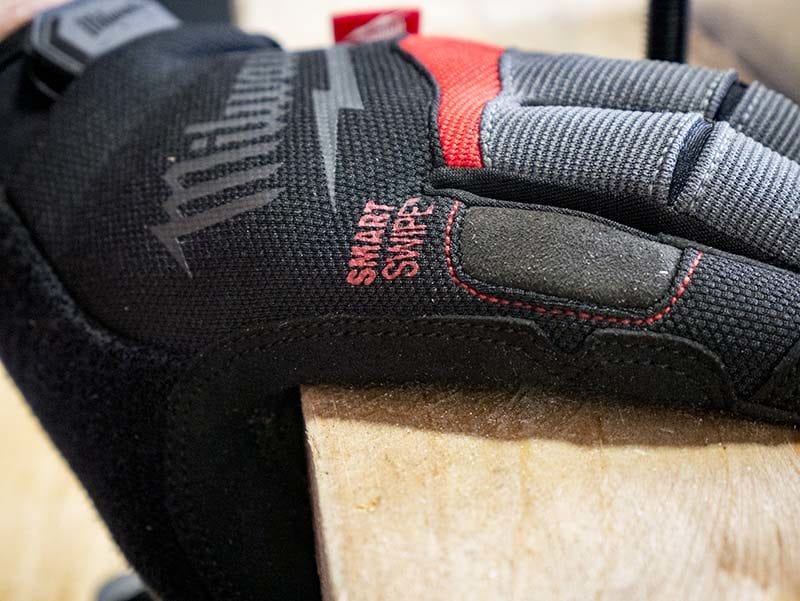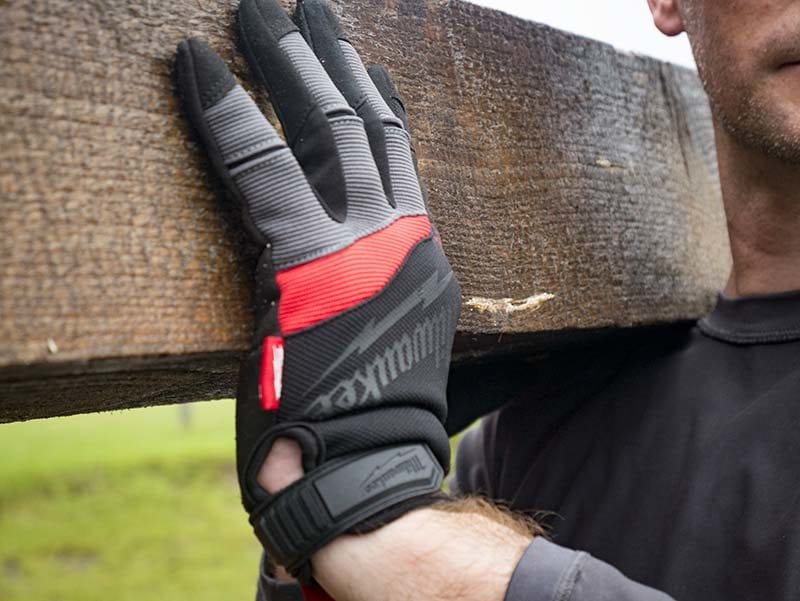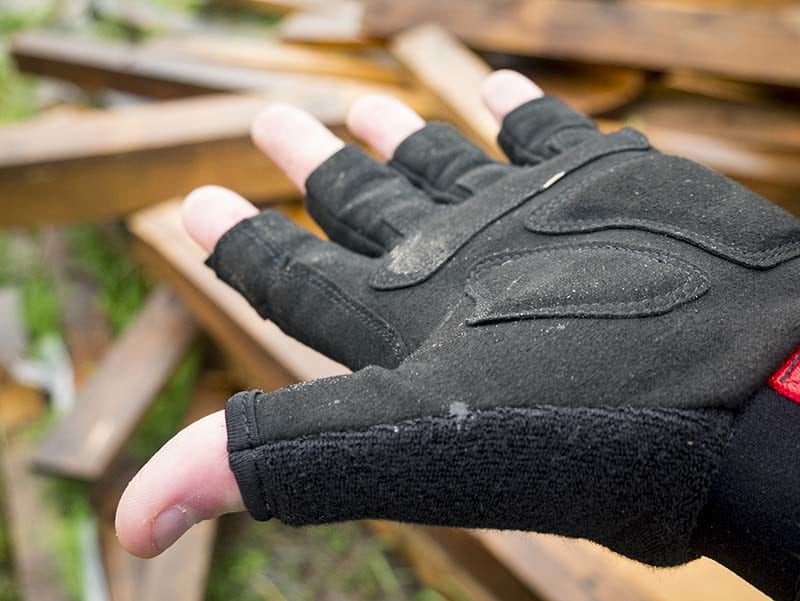Even though our hands are critical to our jobs, some of us neglect to protect them properly. Unlike exposure injuries like respirable crystalline silica to the lungs, injuries to the hands are immediately apparent. That’s because the hands are home to some of the body’s most dense clusters of nerve endings. These nerve endings allow the hand to perform remarkable tasks like reading braille. They are also the reason hand injuries are so painful. Although we’ve reviewed gloves, we’ve never discussed the many types of work gloves and how to choose the right glove for you. We decided to remedy that with this handy guide.
Editor’s Note: Check out our best work gloves article to get our top picks.
Handy Rules for Choosing from the Many Types of Work Gloves
Although some state-level regulations exist, OSHA only specifies that employers provide hand protection from:
- Skin absorption of harmful substances
- Severe cuts or lacerations
- Severe abrasions
- Punctures
- Chemical burns
- Thermal burns
- Harmful temperature extremes
The broadness of the guideline follows the many different substances and dangers which exist on the jobsite. It suffices to say that the protection must be appropriate for the risk. You may find OSHA’s guide to PPE particularly helpful. Another helpful guide for sharp object protection is the 2016 ANSI cut resistance guide.
Finding the Glove of Your Life
Hands can be endangered in many ways. The type, nature, duration, and temperature of the exposure matters. You can also look at immersion versus splash when it comes to liquid risks. Finally, the sharpness and ability of materials to puncture gloves play a role. OSHA categorizes gloves into four groups: 1) leather, canvas, or metal mesh; 2) fabric and fabric-coated; 3) chemical and liquid-resistant, and 4) insulating rubber.
With that said, OSHA missed a whole lot more gloves that range from nitrile to the latest cut-resistant styles. We’ll try to cover the many types of work gloves in a way that details the protections, Pros, and Cons offered by each.
Leather Work Gloves
Leather gloves tend to be thicker than most other styles. They can provide good protection against cuts, burns, and sustained heat or cold. That might be why welders use them exclusively. Leather gloves provide a nice grip, making them excellent for landscaping work as well.
The difference between a leather welding glove and one you might don for some tree trimming has to do with the thickness of the leather, its suppleness, and whether you also have an interior liner. A leather landscaping glove tends to be thinner leather that can protect against thorns and scrapes. It won’t, however, stop a tiny flying piece of super-heated steel.
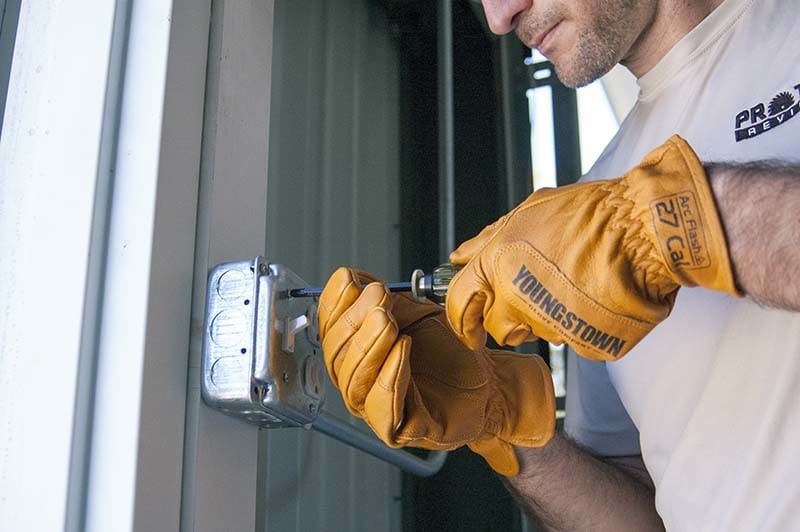
The downside to leather gloves is that they can dry out and crack over time. This happens even more quickly if you leave them out in the sun (or on the seat of your work truck). If you use them outdoors in the summer, you really want to make sure you buy a pair that breathes or which uses a combination of materials.
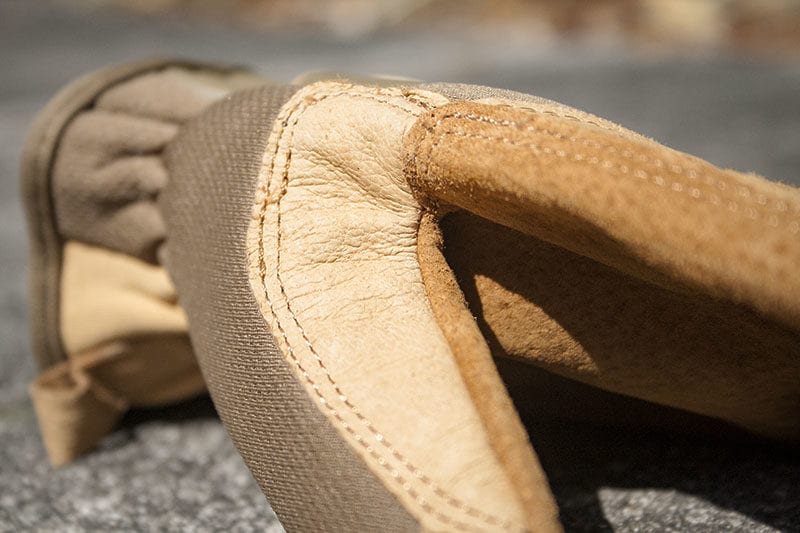
Also, when we say “leather” gloves, we also might refer to synthetic leather or PVC gloves that provide similar protections. Real leather remains our favorite, however—which also carries a premium price.
Cut-Resistant Work Gloves
Cut-resistant gloves come in many forms. Many involve kevlar-woven into the fabric. Others utilize a similar type of cut-resistant technology that converts an otherwise lightweight fabric glove into a much more protective device. Cut-resistant gloves not only protect against abrasions but also direct contact with razor blades, sheet metal, and other sources of cuts and injury.
What we find fascinating about cut-resistant gloves is that they come in so many different styles and formats. For example, the lightest gloves include silicon reinforced fibers woven directly into a yarn-based glove. This allows the glove to maintain a great amount of dexterity while providing exceptional cut resistance.
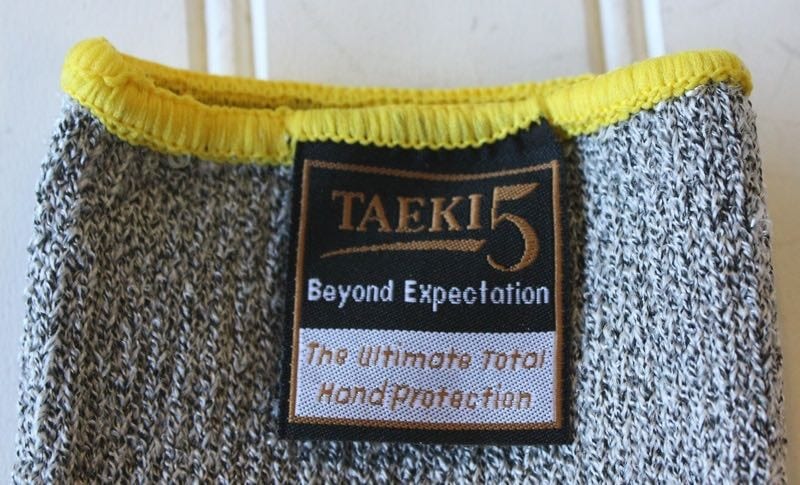
You can also find cut-resistant gloves that also provide puncture resistance thanks to a thick coating applied to the palm areas. and fingers. These provide a reasonable amount of dexterity while bringing cut and puncture resistance that you may have only formerly thought possible via thick leather.
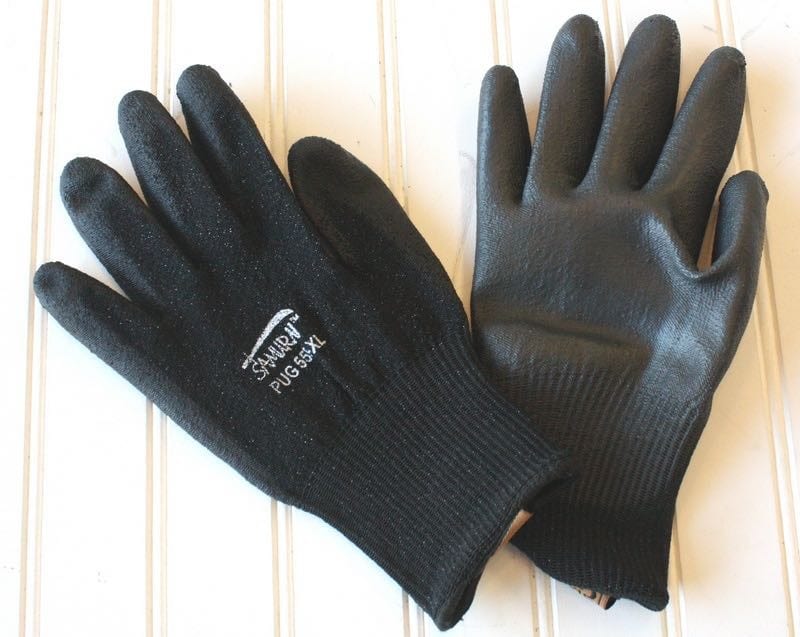
Chemical and Liquid Resistant Latex Work Gloves
When it comes to resisting dangerous chemicals and liquids, latex work gloves rule the day. These gloves provide chemical and liquid resistance to provide protection against absorption and chemical burns. These types of gloves include butyl, natural/latex, neoprene, and nitrile.
Manufacturers typically provide chemical resistance charts to help steer you toward the appropriate glove for the chemicals or liquids you tend to work with.
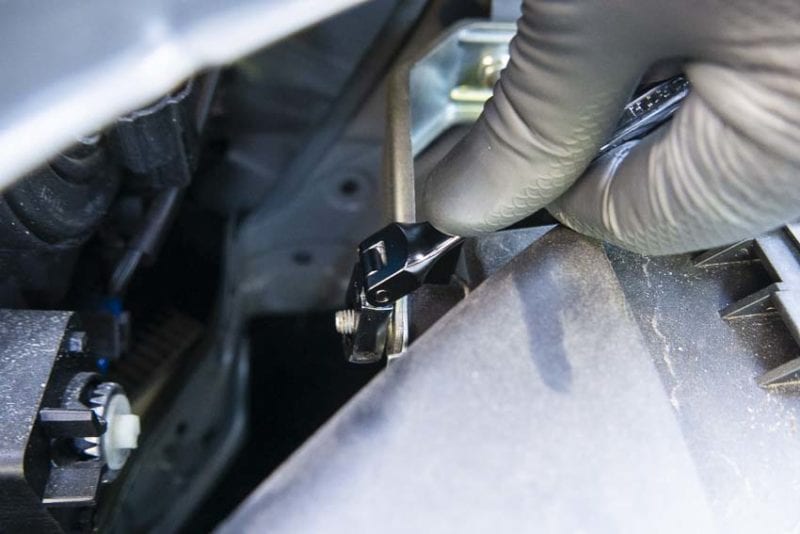
Beyond this, disposable nitrile gloves also fall into this category and are frequently used by auto mechanics. They keep oil and fluids off your hands and save tons of time and clean-up during and after a job. Pay attention to the mil rating of these gloves when you buy them. That will tell you the thickness.
If you deal with caustic chemicals or just need something more durable, you want to match up both the material and thickness to ensure you have ample protection.
Editor’s Note: Check out our article on the difference between nitrile vs latex gloves for more information.
Insulating Rubber Gloves
Insulating rubber gloves deliver protection against electrical conductivity and electrical burns. Be sure the glove is rated for the level of current. Currently linemen—and those in similar need of these types of gloves—can choose from various ratings. Most gloves endure multiple tests and come from factories that meet the highest quality and safety standards.
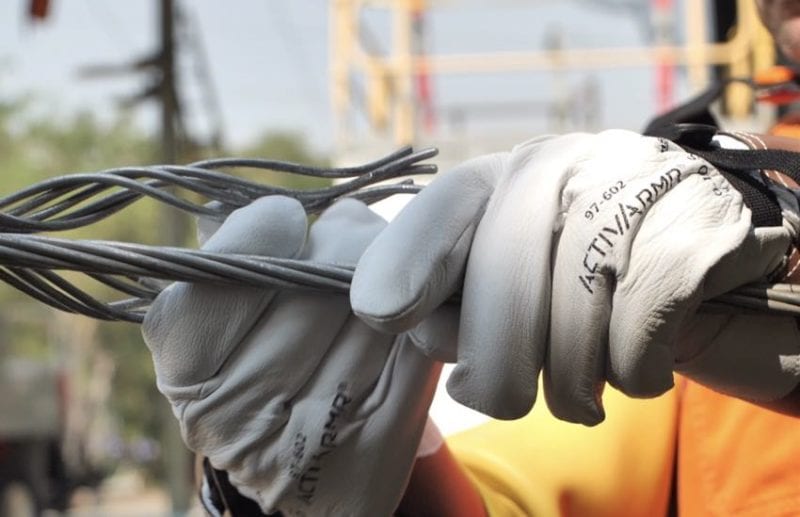
When dealing with high voltages, you also want electrical gloves that come factory tested. They need to be in compliance with EN/IEC or ASTM standards. Many companies also offer locally tested products that include date-stamps and come serialized for traceability.
Protective or Padded Work Gloves
Beyond cut resistance and insulation, sometimes you just want a glove that protects your hands. For this, we love padded gloves that include rubberized protective points for your knuckles and fingers. These gloves come in a variety of styles and levels of protection. Make a habit of trying on several pairs to see what works for you.
Combining dexterity with padding often proves difficult. Manufacturers that have melded the two produce gloves that provide a great mix of comfort, dexterity, and protection. We’ve been impressed with a variety of products, but some of our favorites include:
- Ironclad Work Gloves (nearly all of them)
- Gearwrench Heavy-Impact Work Gloves
- Milwaukee Performance Work Gloves
- Klein Tools Journeyman Leather Utility Gloves
- Pyramex Safety Leather and Dipped gloves
Our Favorite Work Glove Features
Safety and comfort go hand-in-hand (pun intended). Here are some more considerations before you make your choice.
Knuckle Padding
You’ll rarely regret extra padding along the knuckles or back of the hand when the wrench slips or the fastener suddenly breaks loose. The key consideration involves how much you want and whether it shows up as thicker material or rubberized pads.
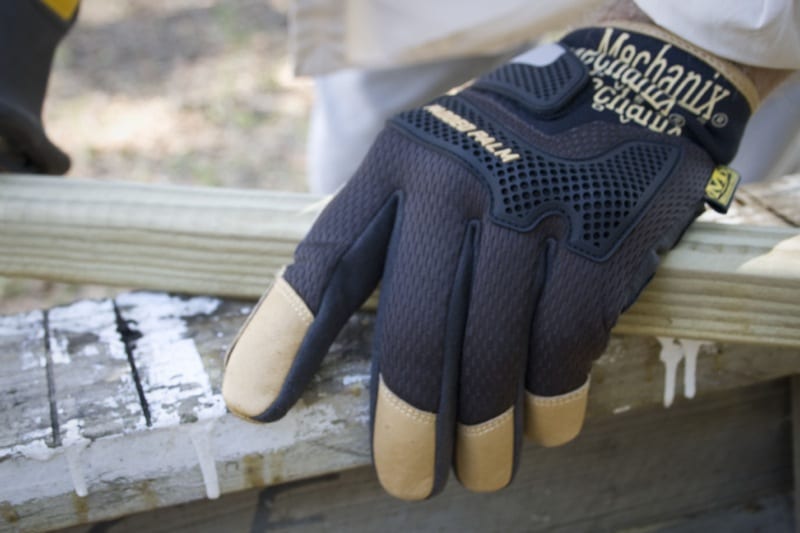
Smart Swipe Terrycloth Pad
One of the greatest inventions in modern “glove history” has to include the terrycloth sweat wipe. This simple invention makes it easy to clear your forehead or eyes of sweat and continue working unimpeded. It may sound trivial—but when you can see because you have sweat in your eyes, you open yourself up to accidents and mistakes. This feature really helps a lot.
Hook and Loop Wrists
For that extra bit of security, consider hook and loop closures (AKA Velcro) at the wrists. This shows up a lot on padded work gloves while leather products and any nitrile gloves leave them off.
Gripping Surface
Some gloves offer extra gripping performance with rubberized, non-slip material. A food grip really helps with material handling—particularly metal. We like combining cut protection with a grippy, rubberized coating to reduce the potential for cuts.
Washability
Washability of gloves should NOT be overlooked. Getting a whiff of well-worn gloves can be… well, pretty unpleasant. Be sure your work gloves are easy to clean in a way that doesn’t compromise performance.
Conclusion
Whatever glove you choose, be sure you are over-protected from what you normally encounter on the job first, and then be sure it provides a high degree of comfort and dexterity. If you do, there’s a good chance you’ll be able to count your blessings at the end of the day. We hope this has helped you answer, “What work gloves do I need?” If you’re a Pro and you have glove tips, add them in the comments below or give us a shout on Facebook, Instagram, or Twitter!

